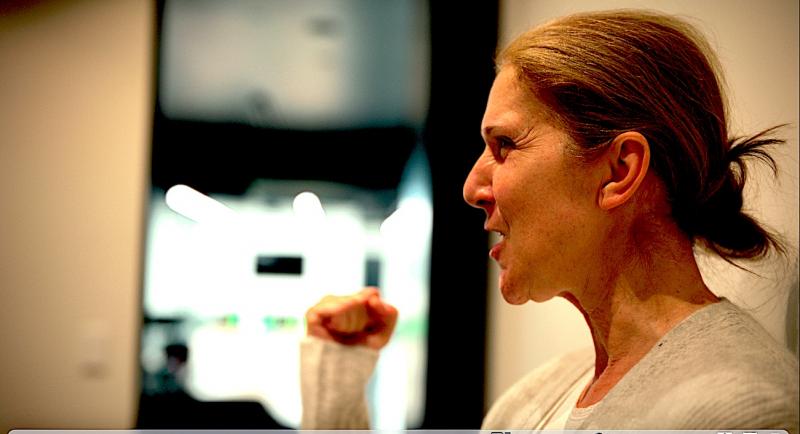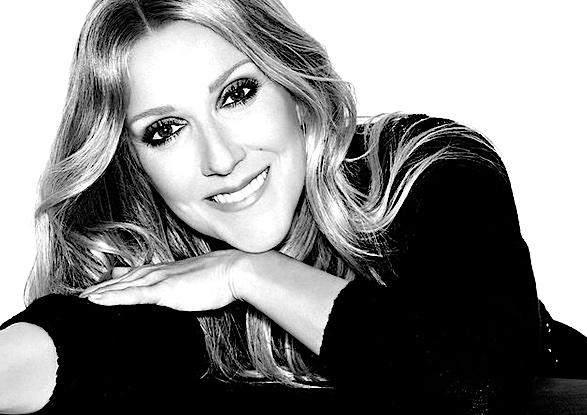I Am: Celine Dion, Prime Video review - inside the superstar singer's living hell | reviews, news & interviews
I Am: Celine Dion, Prime Video review - inside the superstar singer's living hell
I Am: Celine Dion, Prime Video review - inside the superstar singer's living hell
Shattering documentary makes agonising viewing

It was 20 years ago that Celine Dion first experienced the muscle spasming which would eventually be diagnosed as Stiff Person Syndrome (SPS). She suddenly found she couldn’t control the pitch of her voice, a calamitous occurrence for a singer renowned for the almost superhuman power and accuracy of her vocal control.
The Cleveland Clinic website informs us that SPS is “a rare autoimmune neurological disorder that causes muscle stiffness in your trunk and abdomen (the middle part of your body)”, and can spread to the legs and elsewhere. However, this dryly factual summary doesn’t begin to describe the impact it has had on the singer. It’s as if some vengeful deity had pondered sadistically over the most devastating punishment that could be inflicted on her, and hit upon this slow-motion destruction of the thing that mattered most to her, her voice.
 I must confess I found large chunks of this film, helmed with sympathy as well as unblinking clarity by Irene Taylor, too painful to watch. The contrast between Dion at the height of her powers, commanding huge stages around the globe with a kind of ecstatic nonchalance, and the weary, haunted woman trying to comprehend what had happened to her life was like a glimpse into purgatory. Whether Taylor Swift will bust Dion’s statistical achievements remains to be seen, but Celine has sold 250 million records, has had seven albums that sold over 10 million copies, established new records for concert grosses and could boast the most lucrative concert residency of all time with her Las Vegas stint in the early 2000’s. Now, here she was trying to work out if she could ever manage to get back on the boards or record another song.
I must confess I found large chunks of this film, helmed with sympathy as well as unblinking clarity by Irene Taylor, too painful to watch. The contrast between Dion at the height of her powers, commanding huge stages around the globe with a kind of ecstatic nonchalance, and the weary, haunted woman trying to comprehend what had happened to her life was like a glimpse into purgatory. Whether Taylor Swift will bust Dion’s statistical achievements remains to be seen, but Celine has sold 250 million records, has had seven albums that sold over 10 million copies, established new records for concert grosses and could boast the most lucrative concert residency of all time with her Las Vegas stint in the early 2000’s. Now, here she was trying to work out if she could ever manage to get back on the boards or record another song.
“Music… I miss it a lot,” she whispered. “But also the people. I miss them, you know?”
As Duke Ellington put it, “music is my mistress and she plays second fiddle to no-one,” and he would doubtless have recognised Dion’s description of her life’s calling. “My voice was the conductor of my life,” she said. She tried to sing a few phrases, but the result was croaky and weak. “Nobody wants to hear that,” she muttered, fighting back tears.
Gazing in close-up at somebody so palpably forlorn and miserable is a terrible thing, and I found it had the unpleasant side effect of dredging up some particularly painful memories of my own, but Dion had evidently decided to bite the bullet and give her audience the whole nine yards of her experiences. We can only imagine her feelings as she guides us through a tour of the warehouse full of her stage costumes over the decades, explaining how her clothes would be subtly customised to give her more freedom onstage, and confessing how she’d crushed her feet into all manner of grotesque shapes in order to wear shoes that she loved even though they were completely the wrong size. The home movies of Celine in childbirth are gobsmackingly unexpurgated.
 She’s also brutally frank about how she’d tried to hide her worsening condition from her audiences. She would resort to holding out the microphone and getting the crowd to sing to give herself a breather, or pretend the microphone was faulty to camouflage the weakness of her voice. This dishonesty evidently weighed heavily upon her, and it was a relief when she finally went public about her condition.
She’s also brutally frank about how she’d tried to hide her worsening condition from her audiences. She would resort to holding out the microphone and getting the crowd to sing to give herself a breather, or pretend the microphone was faulty to camouflage the weakness of her voice. This dishonesty evidently weighed heavily upon her, and it was a relief when she finally went public about her condition.
The film reaches a shocking climax with the sequence where she suffers a full-scale seizure, leaving her lying on a gurney with her face clenched in a rictus of horror, her mouth twitching uncontrollably. Her terrible wailing sounds are like the night of the living dead. In the midst of this her therapist, fighting to bring her back from the brink, asks if she wants the camera to stop filming, but she manages to indicate that she doesn’t.
We can only wish that she can hear some better news about her condition, and she has her three sons for support (her husband and manager René died in 2016). Even if she can’t sing the way she used to, Dion has given us a brave and shatteringly powerful documentary.
The future of Arts Journalism
You can stop theartsdesk.com closing!
We urgently need financing to survive. Our fundraising drive has thus far raised £49,000 but we need to reach £100,000 or we will be forced to close. Please contribute here: https://gofund.me/c3f6033d
And if you can forward this information to anyone who might assist, we’d be grateful.

Subscribe to theartsdesk.com
Thank you for continuing to read our work on theartsdesk.com. For unlimited access to every article in its entirety, including our archive of more than 15,000 pieces, we're asking for £5 per month or £40 per year. We feel it's a very good deal, and hope you do too.
To take a subscription now simply click here.
And if you're looking for that extra gift for a friend or family member, why not treat them to a theartsdesk.com gift subscription?

Add comment